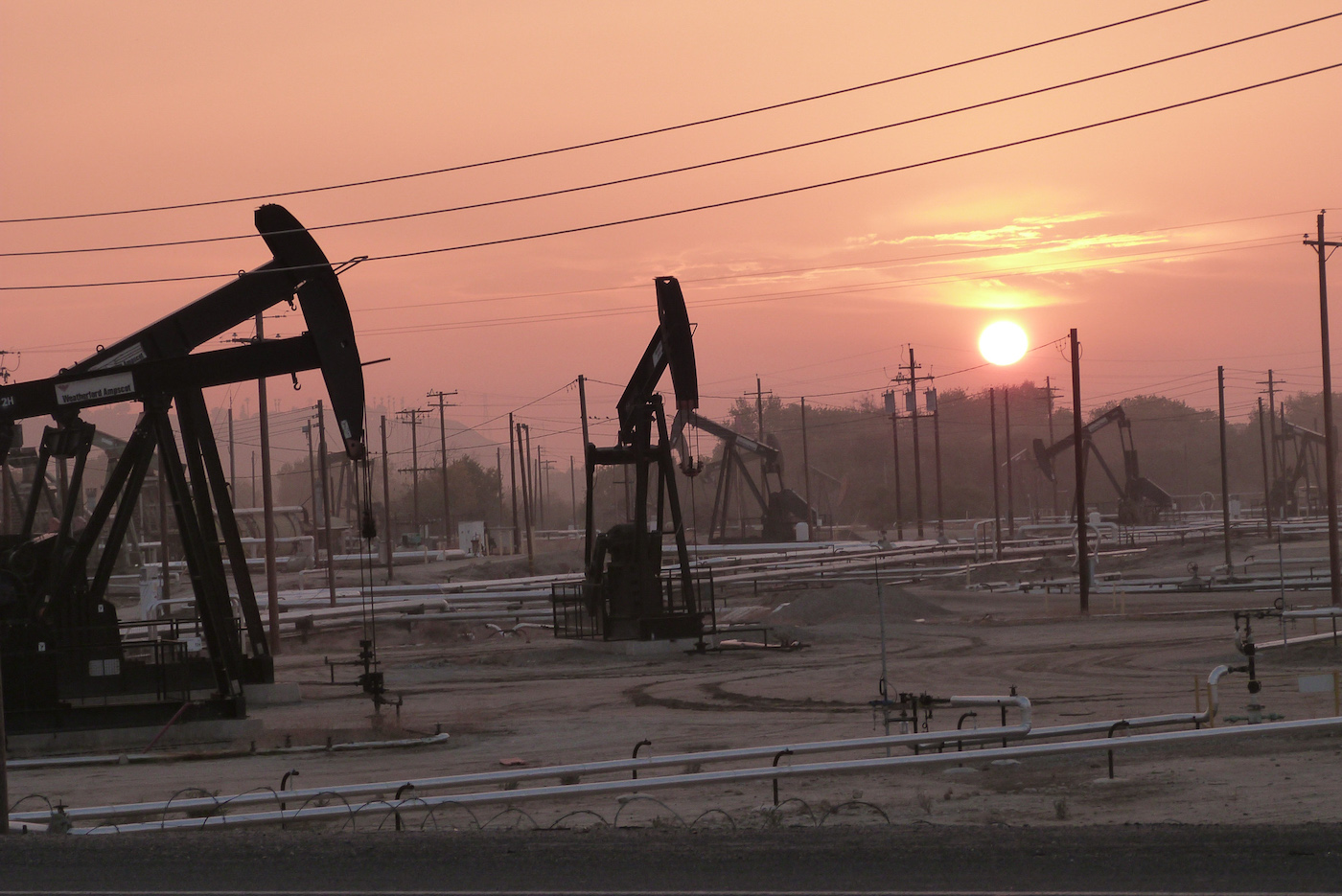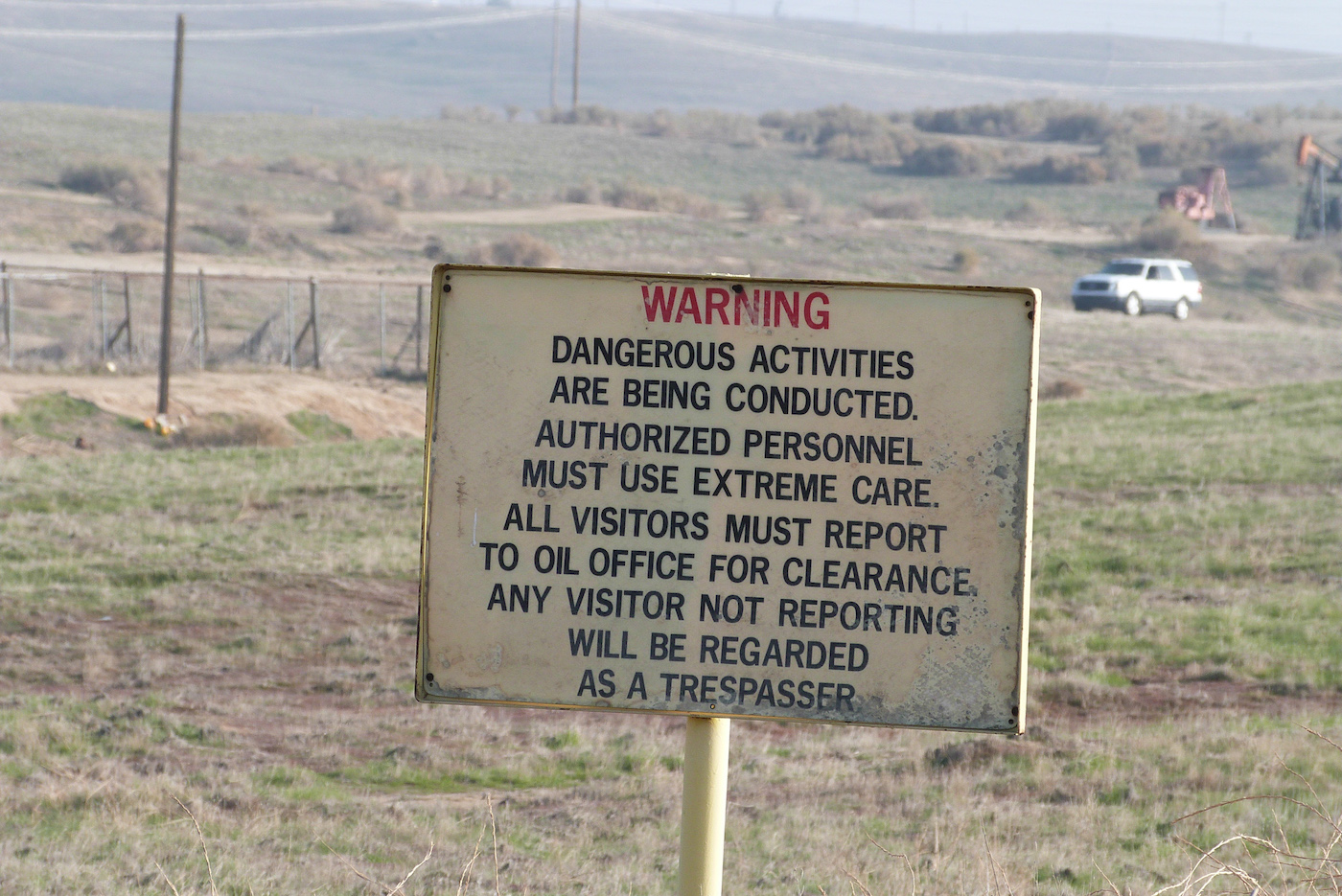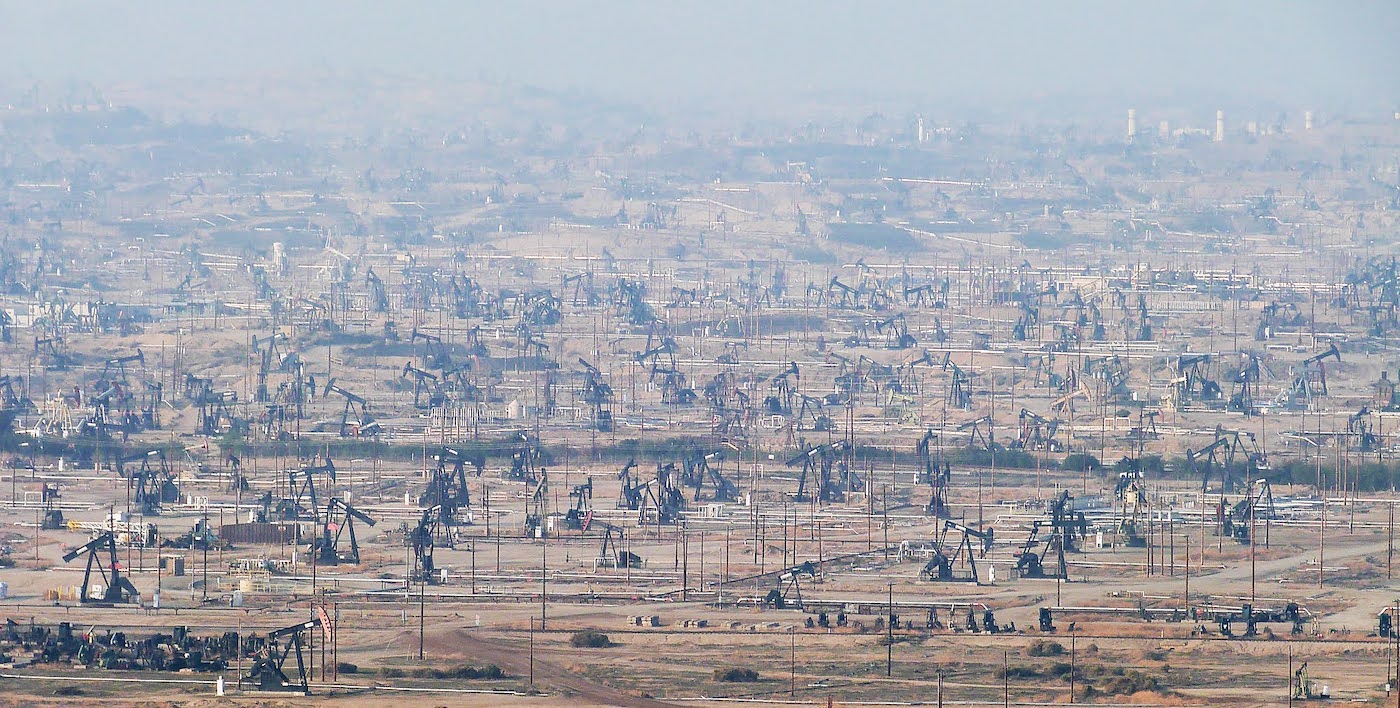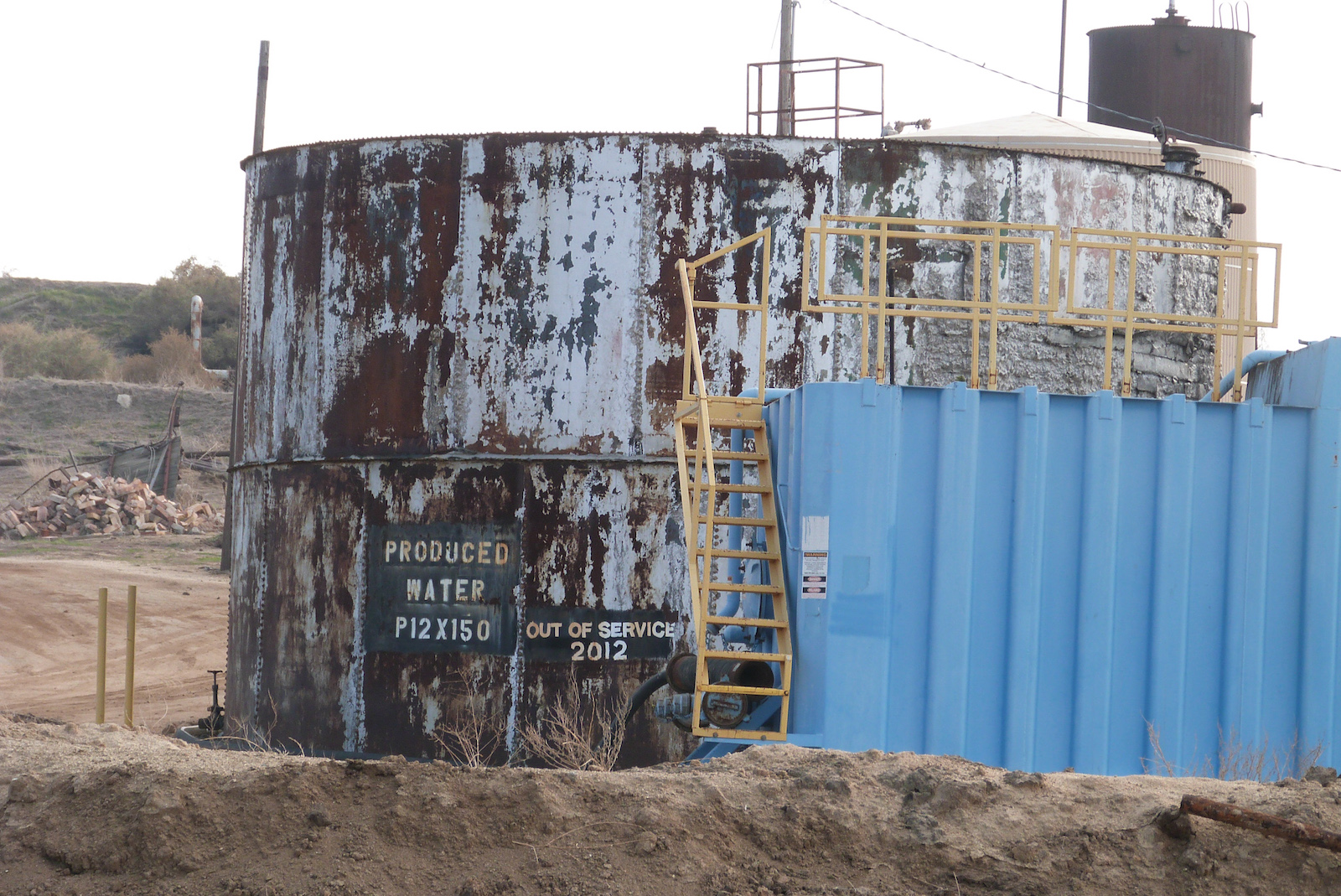This piece originally appeared at Inside Climate News. It is republished with permission.
After years of controversy, the Central Valley Regional Water Quality Control Board assured the public in the fall that eating California crops grown with oil field wastewater “creates no identifiable increased health risks,” based on studies commissioned as part of an extensive Food Safety Project.
Yet a review of the science and interviews with a public health scientist affiliated with the project and other experts show that there is scant evidence to support the board’s safety claims.
The “neutral, third-party consultant” the board retained to conduct the studies, GSI Environmental, has regularly worked for the oil industry. That work includes marshaling evidence to help Chevron, Kern County’s biggest provider of produced water, and other oil giants defend their interests in high-stakes lawsuits around the country and globe.
GSI did not tell water board officials about its ties to the oil industry, which shared the roughly $3.4 million in costs for the firm’s studies and related work with the water districts that benefit from the distribution of wastewater from oil extraction, known as “produced water.”
One member of the board’s Food Safety Expert Panel that reviewed GSI’s studies was nominated by Chevron and initially paid by the oil industry, and a second panel member worked as a consultant for an oil company selling produced water.
Still, the expert panel’s own review concluded that GSI’s studies could not answer fundamental safety questions about irrigating crops with produced water.
Thomas Borch of Colorado State University, a leading expert on treating and reusing produced water for crop irrigation who was not involved in the project, said that based on the data GSI had and the way they designed the experiments, “they were not able to draw the conclusions they did. Period.”
Robert Scofield, who led the work for GSI, said in a statement via email that his firm agreed with the water board that the studies were performed in “the most technically sound manner.”
Clay Rodgers, the water board official who oversaw the Food Safety Project, said he promised the board that if any evidence were ever discovered that produced water was harming people consuming crops, “we would stop it immediately.”
Under the water board’s direction, GSI compiled a list of hundreds of chemicals used in oil operations, then focused on those that might pose health risks. But an absence of information to assess safety dogged the project from the start. Many of the chemicals had never been studied before, or lacked critical details about their use, the board’s panel of experts noted, because the oil companies said doing so would reveal trade secrets.
“Already there was a data gap there because some of those chemicals don’t have reliable toxicity information,” said John Fleming, senior scientist with the Center for Biological Diversity’s Climate Law Institute.

The findings of the board and its expert panel found no food safety or public health concern, said David Ansolabehere, general manager of the Cawelo Water District, which has taken produced water from Chevron for decades. “Cawelo will continue to test the water based on the regional board’s permit requirements.”
Chevron tested for all additives used in the Kern River field for which a testing method approved by the Environmental Protection Agency exists, said Jonathan Harshman, communications advisor for Chevron’s San Joaquin Valley Business Unit.
Yet more than a fifth of the chemicals GSI identified — and 60 percent of those deemed most likely to pose a health risk — lacked both toxicity information and approved testing methods. The water board conceded that the data gaps left “potentially significant unknowns” about the chemicals’ safety.
“When they say this is safe,” Fleming said, “it’s based on what chemicals they were able to test.”
That means the “no identifiable increased health risks” assertion applies to just a fraction of potential chemicals in produced water applied to crops.
Oil’s profligate water use
In early August, during one of the driest summers on record, Wasco farmer Nate Siemens received a troubling notice from his irrigation district, which is regulated by the Central Valley water board. “Please be aware that this water includes some amount of reclaimed oilfield production water,” it said.
Siemens, an organic agriculture consultant with the Rodale Institute, was shocked. Siemens needed that water. But he’s transitioning his family’s Fat Uncle Farms to organic and wasn’t keen on using the oil industry’s wastewater to irrigate his almonds.
Siemens’ farming roots in the region predate the rise of Kern County’s oil industry, which produces more than 70 percent of the state’s oil. He was well aware that climate-polluting pump jacks operate among corporate farms growing miles of water-intensive almonds and pistachios, California’s most valuable export crops. But he had no idea just how entrenched oil operations had become in the county’s $7.6 billion agricultural industry until he received that notice.
About 30 miles southeast of Siemens’ farm, thousands of densely packed pump jacks stretch as far as the eye can see toward the horizon, bobbing robotically as they suck oil and water from wells carved into the denuded landscape of the Kern River Oil Field.
Pump jacks have pried more than 2 billion barrels from the field since oil was discovered here in 1899. But wresting Kern’s notoriously viscous crude from receding oil reserves requires injecting ever increasing amounts of water and hot steam underground.
That water returns to the surface along with groundwater. The mixture contains arsenic, uranium, and other naturally occurring toxic elements, along with potentially hundreds of chemicals used in the extraction process. Since 1985, the ratio of water to oil recovered has more than doubled, from seven barrels of water per barrel of oil to 18 barrels today.
In a region with less than nine inches of rain in a normal year—the definition of a desert—getting enough water is a perennial concern. Nearly 30 years ago, Chevron struck what a former Cawelo Water District manager called a “win-win” deal to deliver some of the massive amounts of wastewater produced every day to farmers’ fields.
Every year, more than 38,000 acre-feet of produced water from Chevron and other oil companies hydrates California farmland, including roughly 11 percent of Kern County’s irrigated farmland. That’s enough to cover about 38,000 football fields with a foot of water, or more than 12.4 billion gallons.
Chevron treats produced water from its Kern River Oil Field by removing oil from water through gravity separation, then skimming off solids and residual oil before filtering it through walnut hulls. The water then travels several miles by pipeline to a Cawelo holding pond, where it’s blended with surface and groundwater and sent to irrigation canals.
The first time Seth Shonkoff, a public health scientist with the nonprofit Physicians, Scientists, and Engineers (PSE) for Healthy Energy and a member of the expert panel, visited the Cawelo holding pond several years ago, he smelled an “extraordinarily strong” whiff of asphalt and crude oil. The same odors were much less offensive when he visited the pond with the panel a few years later.
Either there’s natural variability in the water, Shonkoff said, or someone did something different before experts came to evaluate the operation.
Chevron claims that recycling produced water for irrigation allows the company to operate in a “sustainable manner,” by minimizing reliance on fresh water. Yet the massive energy requirements of the extraction process make Kern’s oil one of the world’s most climate-polluting fossil fuels, and Chevron one of California’s top greenhouse gas emitters.
“California has this green reputation, but if you scratch the surface on the oil industry in the state, you quickly discover that that’s not the case at all,” said Hollin Kretzmann, senior attorney with the Center for Biological Diversity’s Climate Law Institute.
“This is an industry from top to bottom that’s used to getting its way, whether that’s drilling in neighborhoods, or disposing of the wastewater in unlined pits, or using that wastewater for unsafe purposes,” Kretzmann said.
Unfit for purpose
The Central Valley water board said it focused on crops grown in oil wastewater to address public concerns, which included petitions with hundreds of thousands of signatures, protests outside the state Capitol and a bill to label food grown with the water.
Then-Assemblyman Mike Gatto (D-Los Angeles) introduced the bill in 2015, after learning that farmers could get organic certification for shunning pesticides while using produced water, and consumers would never know. “I thought that was a real problem,” said Gatto.
The same year, legislators called hearings to increase scrutiny of oil companies after learning their practices posed risks to protected groundwater, including potential drinking water and irrigation supplies.
“The commitment I made to our board was that if we ever discovered that there was an effect on people consuming crops grown with this, we would stop it immediately,” said Clay Rodgers, assistant executive officer of the Central Valley Regional Water Quality Control Board, who oversaw the Food Safety Project.
Testing crops for harmful chemicals to figure out if they’re safe to eat may seem logical, but techniques to analyze food for oil-related chemicals are “light years” behind those for detecting the compounds in water and soil, Shonkoff said. He raised the problem repeatedly at panel meetings.
In the end, the panel agreed. Its first recommendation to the board was to discontinue crop sampling. It would be far more productive to focus on produced water and irrigated soil, the panel said, using approaches that can reveal the toxicity of the water and soil itself.

Liza Gross
Instead, Shonkoff said, “most of the work that was done to test things for chemicals was done in food. Unfortunately, that was, in my professional opinion, a pretty big waste of time and resources.”
The data GSI compiled—including the list of chemicals and their hazard profiles—was “way too limited” to draw conclusions about lack of toxicity, said Borch, the Colorado State University professor and produced water expert.
“That doesn’t mean it’s toxic,” said Borch. But there was no way they could conclude that produced water posed no identifiable health risks based on the data they had and their experimental approach, he said.
That leaves Siemens, who’s transitioning to organic, in a tough spot. Although produced water isn’t specifically defined under organic standards, organic farmers can’t use water that contains arsenic, a constituent of Kern’s produced water, and most synthetic compounds, like those used in oil and gas operations.
Siemens stopped watering his orchard for a few weeks after his district notified him about the produced water. “And the trees suffered,” he said.
But as the almond harvest approached, Siemens couldn’t risk losing the trees. He used just enough of the water to keep them alive.
“We didn’t know what we were getting into,” he said. “We just didn’t have time to do the research.”
Even if Siemens had done the research, it might not have mattered.
“We could have done some much more impressive and well-designed studies to either conclude that we can continue to use this water or that we should maybe improve the way we treat the water before we reuse it,” said Borch. “We certainly don’t know enough to evaluate whether we need to be worried or not.”
A failure to disclose
One of the biggest hurdles to evaluating the safety of produced water has been oil companies’ unwillingness to reveal key details about the chemicals they put down wells.
Before joining the panel, Shonkoff was working on an independent study of fracking for the California Council on Science and Technology, or CCST, when he discovered a dataset he’d never seen before: a list of chemicals used in conventional oil development, from fields in Southern California. At the time, no other location in the country, and maybe the world, required chemical disclosure for conventional operations. The CCST assessment, commissioned by the state, revealed that testing and treatment of produced water used for irrigation might not remove or even detect chemicals used in fracking.
During fracking, operators inject a high-pressure mixture of water, chemicals, and sand deep underground to break and then prop open surrounding rock to extract oil or gas. Conventional operations, by contrast, inject high-pressure steam to loosen gooey oil. Wastewater from both conventional and fracking operations falls under the heading of “produced water.”
When Shonkoff dug into the newfound data, and read the permits and regulations for Kern County’s produced water, he realized Chevron and other oil companies could put nearly any additives they wanted down wells.
Although the water board prohibits using water from fracked wells for irrigation, fracking, and conventional operations employ many of the same chemicals, Shonkoff told the board at the panel’s first public meeting. And most compounds used in conventional extraction processes in Kern County, he said, lack the information needed to assess safety.
It’s imperative that oil companies disclose not just which chemicals they use in oil and gas production but also the volume and frequency of their use, Shonkoff said. Until then, he said, “I’m not quite sure that we can say with any real level of certainty that this is safe or unsafe.”
Rodgers of the water board said he’d obtained a list of all the chemical compounds oil companies use. But to avoid trade secret information, he said, the board could not get the recipe, which details how often a chemical is used and how much goes down wells.
Rodgers said he felt the highest priority was to get a list he could share with the panel members and the public and compensated for not getting the recipe by assuming all the chemicals were used.
But knowing the hazard associated with a chemical depends on knowing that recipe, the panel concluded. It also requires knowing chemicals’ breakdown products.
Chemicals are injected under intense heat and pressure into oil reservoirs, where they interact with scores of other compounds, before they’re pulled back to the surface and exposed to air. All these conditions can affect a chemical’s toxicity. And scientists have no good tools to understand how chemical interactions increase toxicity.
“This assumption that we should be looking for the chemicals that were added to oil and gas operations, and the assumption that they will continue to be those same chemicals after all the processes that they go through, is too big of a leap to make,” Shonkoff said. “Of course, you’re not going to find them, because they most certainly have transformed into other types of chemical constituents by the time things are being monitored and tested for.”
Some chemical additives might degrade into harmless substances, but others can prove more toxic. Shonkoff pointed to glutaraldehyde, a chemical widely used to kill microorganisms that gum up oil and gas extraction.
Glutaraldehyde is toxic to people, he said. Some of its breakdown products are even more toxic, some are less toxic and others are completely unknown because they haven’t been studied.
“When we’re talking about hundreds of chemicals, many of which we don’t have good toxicological information on,” Shonkoff said, “the idea that you can really understand the toxicological dimensions of their daughter products, and their transformation products in the presence of other chemicals, is outstripping what we know scientifically.”
Even a plant’s own metabolism can affect a chemical’s toxicity.
Plants could take up chemicals in one form and turn them into something else that’s more harmful, said Fleming of the Center for Biological Diversity. But if you’re just testing for a list of chemicals added to the well, he said, you’re testing for the wrong thing.
Robert Scofield, who led the work for GSI, agreed to answer questions only by email. Asked about the focus on testing crops, Scofield offered a carefully worded statement that ended: “We agree with the Water Board and their scientific advisor that this direct testing was the most technically sound manner to address the questions posed in the study.”
When asked about the failure to address chemicals’ breakdown products, he responded with the exact same statement.
“There’s a really big assumption baked into the GSI work,” said Shonkoff. The studies assume that the chemicals remain in the same form from the oil field to a consumer’s plate and that it’s sufficient to monitor those particular chemicals, he said. “And that’s obviously incorrect.”
Still waiting for answers
California supplies 99 percent of the world’s almonds and pistachios, mostly from Kern County.
Water board regulators say nothing has received more scrutiny than the oil field water that irrigates those crops. “We know more about that produced water than probably any other produced water in the world,” said Rodgers.
But the evidence is still so scarce, said Colorado State’s Borch, “you can argue both sides.”
There are no established tools to do a “real toxicity analysis,” Borch said, and there’s “not a good framework” to evaluate risk.

Liza Gross
In a study of treated produced water released into a stream for irrigation in Wyoming, Borch and his colleagues found that most of the chemicals they detected had no health safety standard. There were likely other chemicals and breakdown products “with unknown impacts” that had escaped detection, they noted in the 2020 study, published in Science of the Total Environment. In a related study published later that year, Borch’s team assessed the potential of treated produced water to cause cancer. Several different tests showed that the water caused increased mutation rates—an indication of cancer risk—even though most chemicals were present in low concentrations.
Many stakeholders stand to benefit if produced water can be reused safely, the scientists wrote. But if the practice is expanded prematurely, they warned, it could harm water quality as well as the health of soil, livestock, crops, and people who eat them.
People are still using benchmarks for water quality that were not developed with oil field wastewater in mind, Borch said, even though the complexity and chemical makeup of produced water is very different.
And simply looking to see whether chemicals are present, as the GSI studies did, doesn’t say anything about toxicity. Many compounds in the wastewater may be present in concentrations low enough to escape detection, said Borch. But that doesn’t mean they’re not toxic, he said. “It just means you don’t have the method that allows for extraction and analysis of the compounds.”
In a paper published in December, Borch and his colleagues presented a model for taking a holistic approach that exposes cells and lab organisms to produced water to detect harmful responses, along the lines Shonkoff had recommended.
Borch’s “adverse outcome” approach is also likely to catch the breakdown products the Food Safety Panel identified as a major testing inadequacy.
The Environmental Protection Agency is taking a similar approach, led by its Region 8 office in Colorado, as part of a national program to study the safety of produced water, said Tricia Pfeiffer, an environmental engineer in Region 8’s Technical Assistance Branch.
The effort is addressing the need to harness cutting-edge approaches for evaluating oil-related contaminants, and their byproducts, in produced water intended for reuse. That includes enlisting tools to analyze human cells to identify any worrisome changes caused by chemicals in produced water while applying complementary approaches to detect toxic constituents in the water.
“This is actual research,” Pfeiffer said. “It’s way more complicated than doing something that already has an analytical method.”
As we grapple with climate change issues, she said, “we’re looking for alternative water sources. And as a researcher, my biggest goal with this project is to help fill data gaps and make sure that we’re protective of human health and the environment.”
Borch said the technology exists to remove all sorts of contaminants from water, but it’s far more expensive than the low-cost methods used by Kern County oil companies. If people aren’t willing to pay the real costs of growing crops in a water-scarce region, he said, “maybe we shouldn’t even produce almonds because they use so much water.”
Choosing less water-intensive crops is critical to keeping land productive, said Siemens, the Wasco farmer who was shocked to learn that his water district was sending him oil field wastewater.
Siemens is moving away from thirsty almonds to dry-farming olives, mulberries, and figs, focusing on farming in ways that suit the region. Like raising goats.
“Goats would be happy to eat all these weeds out there,” Siemens said, pointing to the field behind his house. And lots of people in the valley would be happy to eat goat meat, he said. “You can go to any taqueria in the area and buy carne de cabra.”
Siemens’ vision of sustainable farming does not include taking the wastewater of an industry whose greenhouse gas emissions have helped fuel California’s relentless droughts and contaminated its precious groundwater supplies.
“We’re not just trying to meet a USDA organic standard,” Siemens said. “We’re trying to increase the vitality of this land for the future. Our kids live here, and I hope my grandkids will live here.”
That means protecting the soil and aquifers that helped turn Kern County into one of the richest agricultural regions in the world.
Meanwhile, the results of a truly independent analysis of whether oil field produced water is fit to irrigate crops sent around the world, Pfeiffer said, is still years away.
Anne Marshall-Chalmers, an Inside Climate News fellow, contributed to this report.



